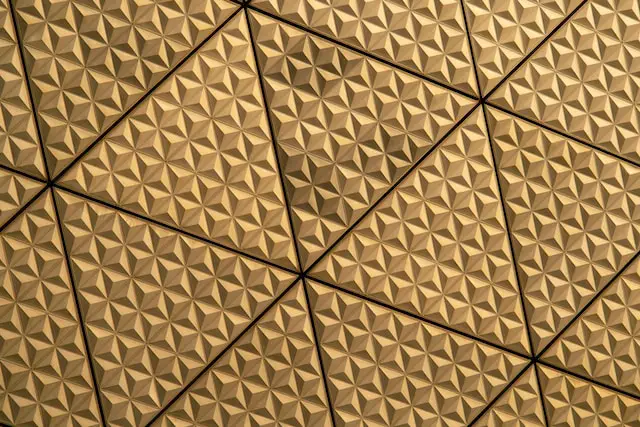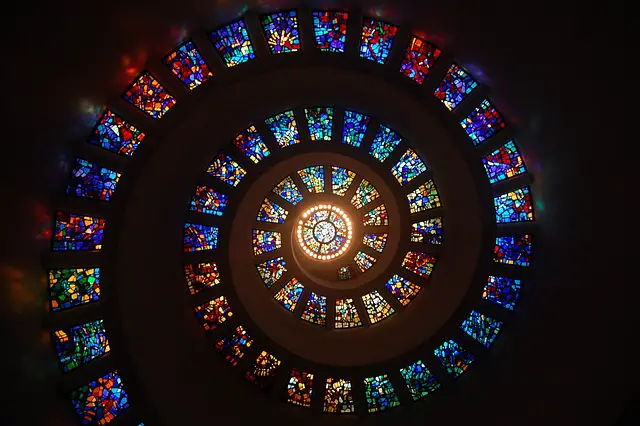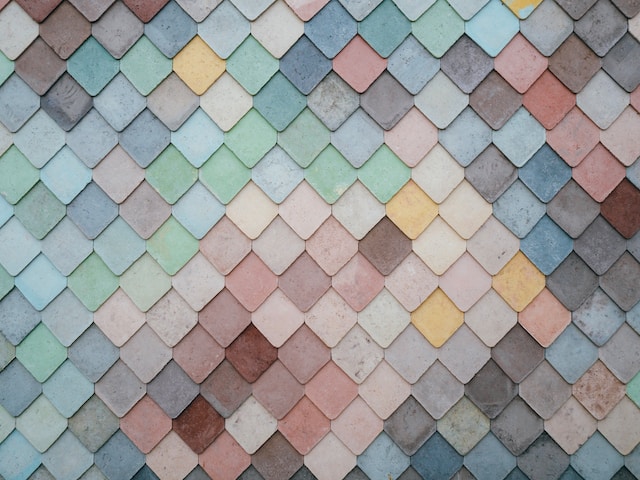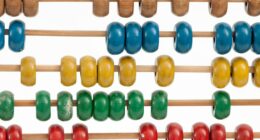A tessellation is a mathematical concept that involves repeating geometric shapes to completely cover a surface without gaps or overlaps. A pattern refers to a design or motif that can be repeated in various ways.
What is a Tessellation?

A tessellation, also known as tiling, is a mathematical concept that involves covering a plane with repeated shapes or patterns without any gaps or overlaps. It’s like creating a captivating puzzle where each piece fits perfectly into the next. These shapes can be anything from triangles and squares to more complex polygons. The key is that they must seamlessly connect to form an intricate design.
Tessellations have been used in various art forms throughout history, from ancient Islamic architecture to modern graphic design. They possess a mesmerizing quality that draws you in and makes you marvel at the precision and symmetry involved. Think of the stunning patterns on tiled floors, mosaic artwork, or even the scales on a reptile’s skin – all examples of tessellations in nature and man-made creations.
What is a Pattern?

A pattern is a repeated design or motif that creates a sense of rhythm and harmony. It can be found in nature, art, textiles, architecture, and even in the way we organize our daily routines.
A pattern can take many forms – geometric shapes, lines, colors, textures – but the key element is repetition. This repetition allows for predictability and familiarity. We often find comfort in patterns because they provide structure and visual interest.
Patterns can be created intentionally or emerge naturally. They can be symmetrical or asymmetrical; they can follow strict rules or have more organic variations. Think about the intricate designs on wallpaper or the unique arrangement of petals on a flower – these are all examples of patterns.
Tessellation Vs. Pattern – Key differences
| Tessellation | Tessellation |
|---|---|
| A repetitive arrangement of shapes that completely covers a plane without any gaps or overlaps. | A recurring design or motif that repeats in a predictable manner. |
| Geometric arrangement of shapes | Design or arrangement of elements |
| Covers an entire plane without gaps or overlaps | Can cover a smaller area or be scattered |
| Consistent repetition of one or more shapes | Repeating elements or motifs |
| Usually composed of regular polygons | Can be composed of various shapes and forms |
| Shapes fit together to create a seamless pattern | Elements may or may not connect directly |
| Often used for decorative or artistic purposes | Can serve both functional and decorative purposes |
| Honeycomb pattern, tiling patterns in architecture | Stripes, checks, floral designs in textiles |
How to Create a Tessellation
Creating a tessellation may seem like a complex task, but with some basic knowledge and creativity, you can easily create your own unique designs. Here are the steps to get started:
- Choose your shape: Start by selecting a basic shape that will be repeated throughout the tessellation. Common shapes include squares, triangles, or hexagons.
- Draw your shape: Begin by drawing the chosen shape on a piece of paper or using digital tools. This will serve as the template for your tessellation.
- Duplicate and rotate: Take multiple copies of the original shape and arrange them in different orientations around it. Make sure that each copy fits snugly against its neighbors without any gaps or overlaps.
- Fill in the gaps: Once you have arranged enough shapes to cover an entire area without any empty spaces, fill in any remaining gaps with additional copies of your chosen shape.
- Add details if desired: If you want to add more complexity to your design, consider adding smaller shapes or patterns within each individual element of the tessellation.
Remember, creating a tessellation is all about repetition and symmetry! Experiment with different shapes, sizes, and arrangements until you achieve a visually pleasing result that reflects your own style and imagination.
How to Create a Pattern
- Define the Purpose and Context: Determine the purpose of the pattern and where it will be used. Consider whether it will be for textiles, digital graphics, or any other specific application.
- Select a Theme and Elements: Choose a theme or concept for your pattern, such as nature, geometric shapes, or florals. Select key elements that align with your chosen theme.
- Design the Layout: Create a layout by arranging and repeating the selected elements in a visually pleasing manner. Experiment with different placements, orientations, and spacing to achieve the desired effect.
- Choose Colors: Select a color palette that complements your theme and creates the desired visual impact. Choose colors that harmonize well together and evoke the desired emotions or aesthetics.
- Test and Refine: Test your pattern by repeating it to ensure a seamless and visually cohesive result. Make any necessary adjustments to improve the balance, alignment, or overall appeal of the pattern.
What is an example of a tessellation pattern?
An example of a tessellation pattern is the famous artwork by M. C. Escher called “Reptiles.” In this intricate design, Escher created a tessellation using reptile shapes such as lizards and turtles. The reptiles are positioned in such a way that they fit together perfectly without any gaps or overlaps.
The pattern repeats indefinitely, creating a mesmerizing visual effect. Each reptile shape is carefully crafted to seamlessly connect with the surrounding shapes, forming an interconnected web of creatures.
Another example of a tessellation pattern can be seen in Islamic art and architecture. The repeating geometric patterns found in mosques and palaces feature intricate tile work that forms stunning tessellations. These patterns often incorporate stars, flowers, or calligraphy motifs.
Tessellations can also be found in nature. One example is the hexagonal cells formed by bees when constructing their honeycombs. Each cell fits snugly with its neighboring cells to create a perfect honeycomb structure.
There are countless examples of beautiful and fascinating tessellation patterns across various disciplines – from art to mathematics to nature itself!
Image Credits
Featured Image By – Andrew Ridley on Unsplash








